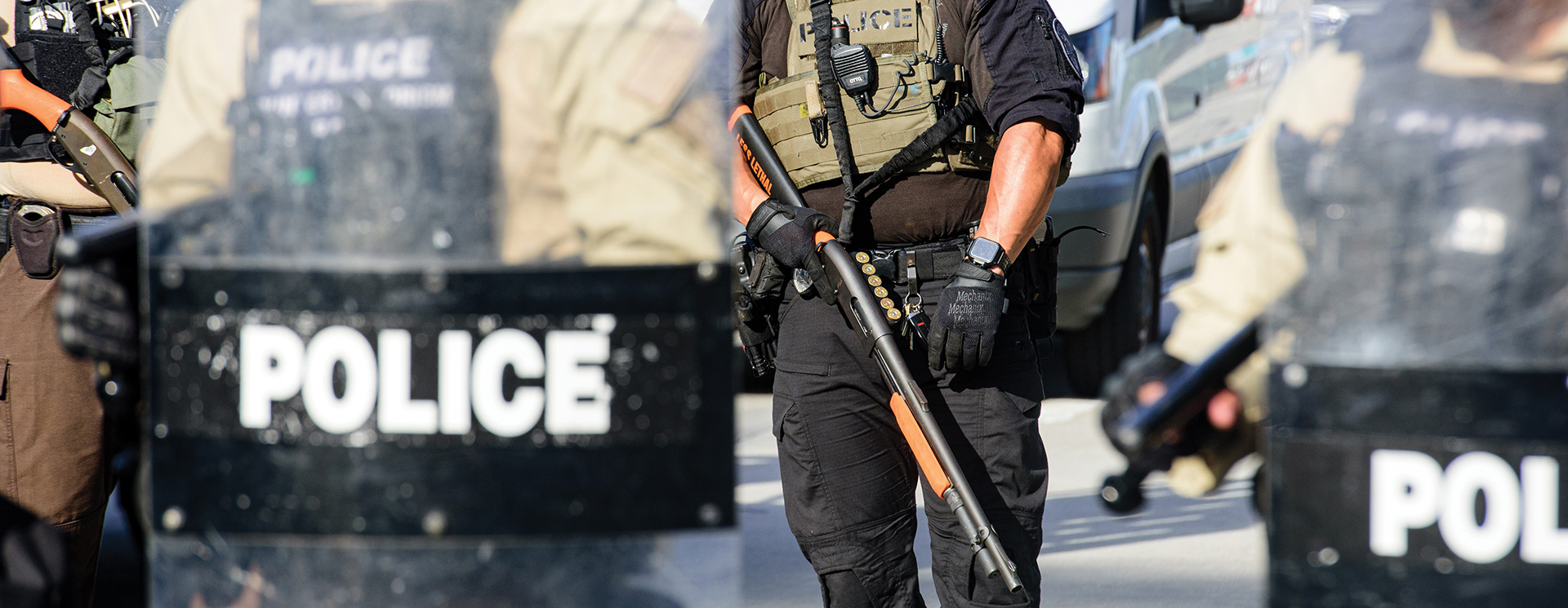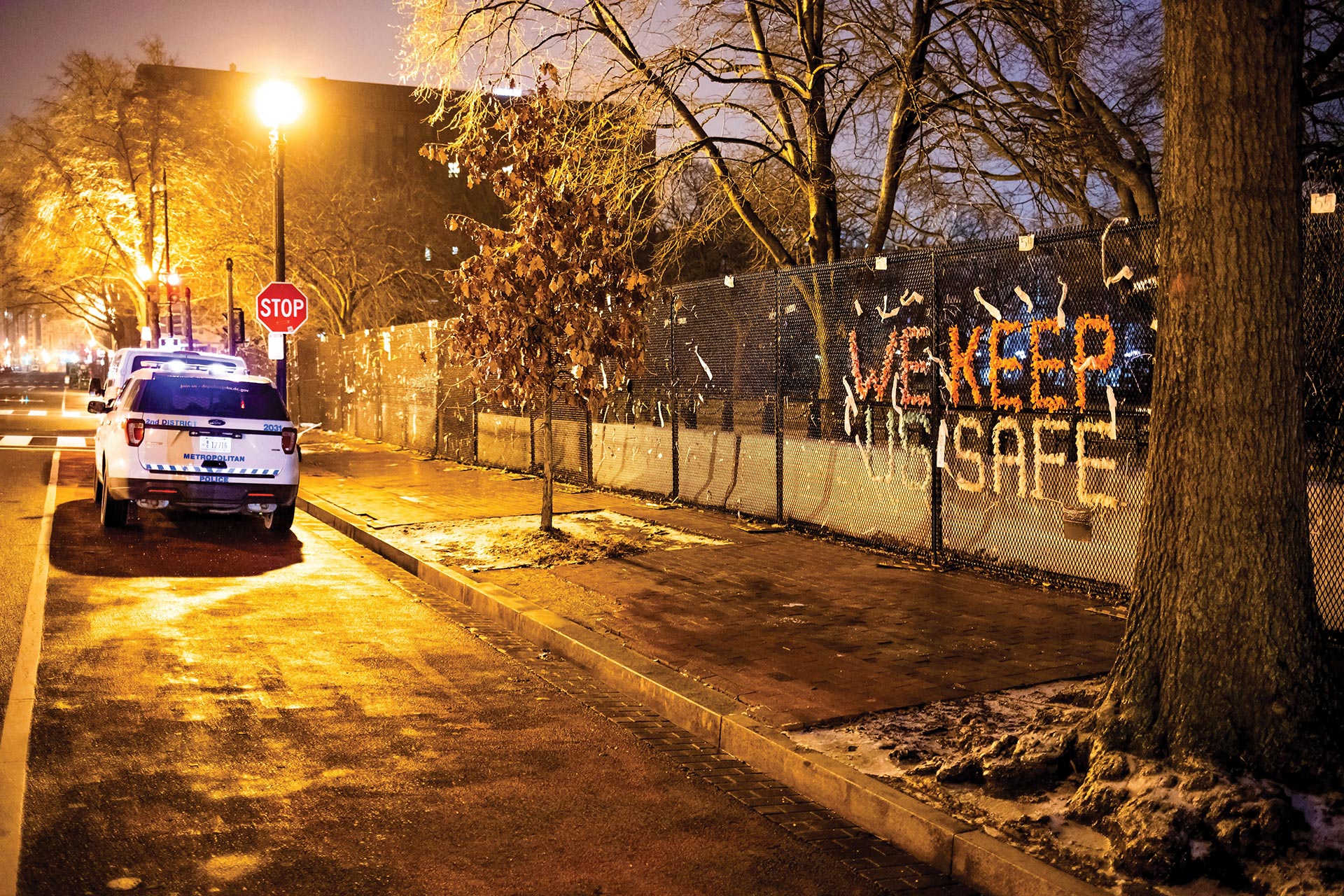
During the summer protests of 2020, a crowd of angry demonstrators surrounded a police car in Memphis, Tennessee, threatening and potentially endangering the two officers inside. In the fall of 2020, a D.C. man pursued by police was struck by traffic, triggering a riot at the local precinct. In Chicago, citywide protests erupted when a man with a weapon was shot by police. In each of these cases, the agitated crowds were operating on assumptions, rather than knowledge of the incident, and in no case could the officers have known precisely what was fueling the anger and the actions of the protesters.
Since the dawn of this decade, large-scale public reactions to police incidents have been growing in number, and in many cases, they are fueled by misinformation and rumor. Nonetheless, officers are tasked with the difficult and often precarious job of maintaining order and protecting the speech, life and property of protesters, the public and themselves. As people continue to demonstrate to express their dissatisfaction — whether over police conduct or other grievances — officers should have a clear understanding of the motivating power of information, true or false, so they are prepared to quell potential violence without further alienating the public.
When officers are tasked with maintaining order in protests, they face individuals who are acting on information that may well be incomplete, but that they experience as emotionally significant.
The first thing to remember is that information moves us. At its base, information helps us understand, and we want to understand because how and what we understand influences the decisions we make. Without information, we have nothing to act on or respond to. However, information does not motivate us on its own. Our emotions anchor the motivating power of information. We are more likely to believe, share and act on information, even if it is false, when it strikes us as significant and animates our feelings. This helps to explain the remarkable public reaction to the death of George Floyd, which activated a variety of emotions and responses — from feelings of police impunity to a sense of misplaced blame. Floyd’s death sparked months of protests around the country and significant action on the part of city officials to push for police reform. In response to the same events, we saw a surge in conspiracy theories and the spreading of misinformation depicting brutal police activity and falsified protester violence that further stoked anger, mistrust and division on all sides.
Of course, this is not unique to protests of police actions. Consider the protests against COVID restrictions and the January 6 attack on the Capitol. Salient information that evokes emotion leads to action. When people are standing up for what they believe in or calling out against injustice, they are motivated by emotions, regardless of whether the information they are reacting to is accurate or truthful. The same can be said of police, not just protesters. The motivating power of emotions is intrinsically human.

It’s important to note that the feelings that tend to spur action in protest settings tend to be negative feelings: anger, frustration, fear and anxiety. Negative emotions are powerful motivators because biologically we prioritize the bad over the good. Psychologists call this negativity dominance. Because these feelings signal a perception of threat, our brains actually process them faster than positive signals. As a result, we can fall prey to the expectation that our negative interpretation of an event or person or group is the whole picture. This primes us to engage in selective perception and confirmation bias, two common errors in human thinking. When we perceive selectively, we pay attention to information that confirms preconceptions and expectations — for example, that police are bad actors or that protestors are terrorists. This leads us to confirmation bias — the practice of concluding that our preconceptions are true — despite the fact that we have only paid attention to information that confirms them and have not given open consideration to information that might lead us to question our assumptions.
All of this is to say that when officers are tasked with maintaining order in protests, particularly those that target the police or government institutions, they face individuals who are acting on information that may well be incomplete, but that they experience as emotionally significant. This is why they are out protesting. However, it can put officers in a bind. In some cases, officers working to keep order can look to a protesting group like they are preventing the protesters from being heard. Officers themselves then become the target of protesters’ heightened negative emotions. How can officers overcome this to peacefully protect?
Already, law enforcement is at a disadvantage, because law enforcement is force-forward — using the power and authority of the law to maintain order. While necessary in case of danger, this primes individuals for antagonism. People don’t want to be told what to do and they don’t want to be told no. When we are, we tend to double down on what we think is right. We dig our heels into our positions. We push back. This is particularly true when something important is at stake for us. How familiar are the images of clashes between police and protesters over the past two years? Psychologists call this tendency to push back reactance. And it’s familiar to officers beyond protest situations. When compelled or forced to do something, we often resist as a way to assert our own freedom and autonomy. This presents a challenge to peacefully keeping order. When calls for compliance — staying back, maintaining calm — are met with resistance, the default is to push harder for it. But because of the psychological phenomenon of reactance, pushing for compliance is less likely to achieve it and more likely to result in escalation.
So what do we do about this? How can we control crowds and keep the peace when crowds are emotionally motivated and primed to resist control, especially when their animosity is directed at the officers charged with protecting them and their speech? The first step is to recognize the emotional dimension of people’s actions. People are angry, frustrated, anxious and afraid because something important to them is at stake. They are out there protesting to have their messages heard, regardless of how grounded in reality the messages are. This simple awareness can help to check any counter-reaction.
Staying open to those messages and emotions, and trying to listen, even when someone is yelling at you, can go a long way. It’s more important to people that you hear them out than agree with them. When what they say angers you or goes against what you believe, remember that at the base of it, their goal is to be heard. Feeling heard can spontaneously defuse negative emotions because it is a positive experience.
The second step is to remember that even though people are primed to resist when they are told no or ordered to change their behavior, they are also primed to choose actions that they believe they are choosing freely. What you can do is open the back door to compliance — get people to comply by helping them arrive at the choice to comply without forcing them, but by getting them to think. The best way to get people to think is through active listening and curious questions.
In Memphis, an experienced commander was able to turn away the angry mob surrounding the police car in the episode mentioned at the beginning of this essay. She didn’t do it by forcing them to back off with OC spray or riot shields, but by asking them what they were hoping to gain by surrounding the car, and what message they were trying to get across by threatening the officers inside. By asking questions, she opened dialogue that defused the feelings of anger motivating the group. By listening to the group, she moved them past their preconceptions, instilled some confidence in the situation, and led the group to disperse of their free will.
So, when confronted with groups who are emotionally motivated and gripped by negativity and animosity, try to get curious. What are they out here for? What makes them want to surround the car or push the line? Asking questions that aim to understand the feelings and goals motivating decision-making gets people to think. It opens the opportunity for dialogue and the ability to choose behaviors that are peaceful and compliant, rather than reactive and resistant. And keep listening. People are out because they want to be heard. The role of law enforcement is to let people be heard in an orderly way. To prevent rumors from turning into riots, remember the psychology behind protest behavior, and use it to keep the peace.
As seen in the January 2022 issue of American Police Beat magazine.
Don’t miss out on another issue today! Click below:






